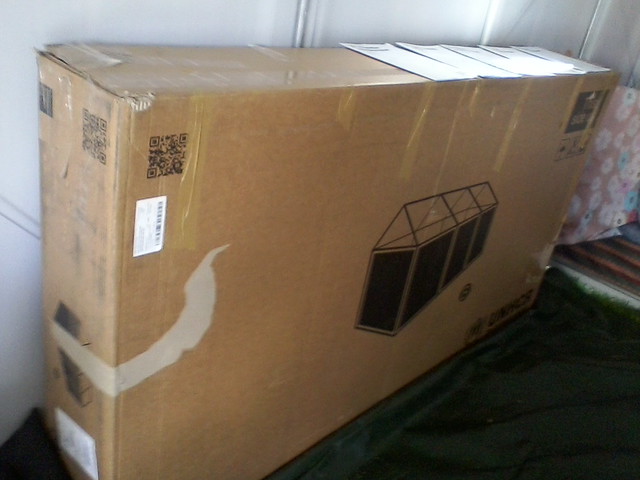The UNHCR is using flat-packed shelters for housing refugees. One of these is on display at Canberra Floriade spring flower festival.
The shelter comes in several large cardboard boxes, like flat-pack furniture (but looks easier to assemble than a bookcase). It has a tubular metal frame, stiffened by wires and covered with foam plastic insulated semi-rigid panels. There are small insect screened windows and a solid plastic door.
The shelter has the option of a solar panel with LED light and phone charging point. That may seem an extravagance, but otherwise lighting has to be provided using expensive and dangerous fuel lanterns. Also low cost devices can be charged for use in mobile learning for children.
The shelter is, effect, a semi-rigid tent and, as such is one step up from a tent. It would offer better protection from the elements than a tent and more of a sense of a home. However, it is not luxurious accommodation.
It should be possible to build much larger structures, for community use (for a school for example) from the same building components.
While the flat-packs are relatively small, perhaps they could have been made smaller by using open cell, rather than closed cell foam for the panels. The panels could then be squashed flat for transport, taking up about half the volume (and would expand when unpacked).
Transport for such units would be "bulked out": that is the human porter, pack animal, truck, ship or aircraft, would be limited by the volume it could carry, not the weight. Making the unit more compact, even if sightly heavier, would allow more to be carried. It should be possible to make the panels out of metal. This would make the shelters more durable (and fire resistant). The panels could be made to become corrugated for stiffness, when unpacked and the foam insulation core expands.


No comments:
Post a Comment